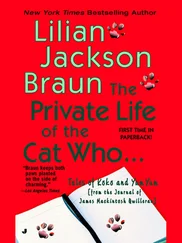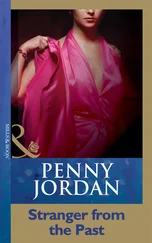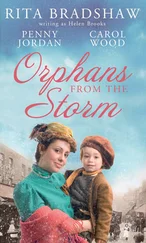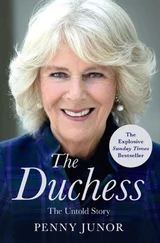And that is one of the functions of monarchy: providing a focus for people’s emotions. Two women spend an entire morning each day opening and sorting letters. The Queen doesn’t answer them personally but she sees them and gets a very good feel as a result for the issues that are worrying people. Her other great feeler for the mood of the nation is the conversations she has when she is on away days. People may only have a few seconds with her when she shakes their hand, and some are so overcome with nerves that they utter nothing intelligible, but some come straight out with whatever is on their mind, from Britain’s engagement with Europe to the contentious issue of foxhunting.
The Queen’s other opportunity to meet people outside her own social circle is at receptions and lunches at the Palace. A recent innovation has been themed receptions. There was one for pioneers, for example, to which people like James Dyson, of vacuum cleaner fame, were invited; another for people who had changed the life of the nation, for which the television cook Delia Smith was chosen; and another for women of achievement, which included all sorts from Lady Thatcher to Kate Moss.
The research for all of these activities is done by the CRU. They plan the Queen’s programme and research not only who the women of achievement, for example, are for the receptions, but also which parts of the country are due for a royal visit. They have the latest in IT – researched, you guessed it, by the CRU – and with this they can produce geographical analysis tables of royal visits, and can work out where each member of the family should go in the coming six months.
On one of the days I followed the Queen she was in Surrey, where amongst other things she opened a new orthopaedic wing at Epsom hospital and met a familiar face – Mr Roger Vickers, the surgeon who operated on her knees and the Queen Mother’s hips so successfully. It was no random choice: she had not been to the county for five years. They also do research on patronages; if a charity approaches a member of the family asking them to become patron or president, they check it out. They research new thinking from the private sector, look at policy procedures, work with the Press Office on opinion polls, scrutinize travel plans; the list is endless, and, according to Havill, the unit is constantly changing, constantly modernizing, constantly evolving.
A longer-established tradition are small, informal lunches at Buckingham Palace for assorted members of the great and the good. It was an idea suggested by the Duke of Edinburgh, who has had many good ideas during the course of the Queen’s reign. These lunches were held so that the Queen could meet interesting people and opinion formers who she didn’t normally come across; and, just as importantly, so that they could meet her. The first lunch took place in 1956 and she has been holding them ever since. People who go are generally enchanted, my own father among them. There were ten guests the day he went, a typical number. At the time he was editor and columnist of the Sunday Express ; his fellow diners were a Tory MP, Sue MacGregor, then the presenter of Woman’s Hour , a High Court judge, an interior designer, the coxswain of the Humber lifeboat and Anne Beckwith Smith, lady-in-waiting to the Princess of Wales. They gathered promptly at 12.50 in the 1844 Room where they were given a drink before lining up to meet the Queen and Prince Philip who came in and shook hands with each of them and engaged in small talk. There were corgis roaming around and my father jokingly asked the Prince whether they were dangerous. ‘You mean are they in danger from you?’ he retorted. He had clearly done his homework and had a journalist in his midst under sufferance.
At lunch my father found himself on the Queen’s left-hand side, the judge was on her right, and throughout the first two courses – salmon, followed by braised ham – she addressed not one single word to him. He was beginning to feel more than a little miffed. At the other end of the table he noticed that the Tory MP was in exactly the same situation. He was on the Duke’s left and for two courses had been completely ignored while Philip lavished attention on Sue MacGregor, seated on his right. The two of them looked at each other and shrugged their shoulders.
But as soon as the pudding arrived the entire table was transformed. The Queen and the Duke of Edinburgh both turned to the guest on their left and my father basked in the Queen’s full attention for the rest of the lunch. They chatted, he said, like old friends and he was always certain that the key had been horses. On the way to the Palace his office driver, a very keen punter, had told him to ask the Queen whether her horse Height of Fashion was going to win the Oaks. This is precisely what he did and the Queen immediately lit up and explained that the horse’s legs were possibly too long for the Epsom course but that its chances would be decided by whether the horse ran well at Goodwood. Bingo.
Someone should have taken them to one side and said, ‘Make this work. Go out on to that balcony, hold hands, smile and when you come back down, one of you turn to the right, one to the left. Take a mistress, take a lover if you want, but for the sake of the boys, the family and the country, stay together.’ No one seemed to have the long view; Diana was a huge asset. She’d have been in her forties by now; and one of the most interesting women in the world, the best ambassador for this country ever. She could have been UNESCO’s child ambassador … Wherever we went people’s eyes widened – her mannerisms, her dress sense. What else did he want? In that position you’ve got to work together. Someone should have said to the Queen, ‘This is the next generation coming through.’ They should never have let her go.
These are not the words of an outsider who didn’t understand the situation. This is someone who worked for the Prince of Wales before his marriage and for both the Prince and Princess for several years after the marriage. He was a member of the royal household for ten years in all and was loyal, devoted and dedicated. He is now in his early seventies and might still have been there in some capacity or other had he not been caught in the crossfire of the warring Waleses. He was enormously fond of both the Prince and the Princess and would have wished the greatest personal happiness to them both, but this was not about personal happiness. It couldn’t be. They were not just any couple; they were royal, they had obligations; and his principal concern is for the monarchy.
There is no doubt that he is right. The monarchy was very seriously damaged by the breakdown of that marriage; it destroyed the respect that a great many people instinctively felt for the Royal Family and it paved the way for much of the intolerable media intrusion that has now become a part of their lives. Charles and Diana would not have been the first couple to have lived separate lives under the same roof; they didn’t even have to be under the same roof – they already had a roof each – Charles at Highgrove in the country, Diana at Kensington Palace in London. Aristocratic families have been doing precisely this for generations: staying married for the sake of their children and their estates, and discreetly taking lovers on the side. It should have been possible for the Prince and Princess, but this was such a mismatch, the relationship so volatile, Diana so unpredictable and the handling of it all so inept that in the final analysis bringing the marriage to an end was the lesser of two evils.
Michael Colborne first met the Prince of Wales in the Navy in the early seventies when, fresh out of Dartmouth, Charles had joined his first ship, HMS Norfolk , as a sub-lieutenant. Colborne was a non-commissioned officer, fourteen years his senior, unfazed by the HRH tag and quite unafraid to speak his mind. He was a grammar-school boy, with a wife and young son, who had joined the Navy at sixteen and been there all his working life. The two became friends and they would sit up at night, talking over a few drinks; Colborne would often pull his leg and when they were on shore leave he would show him the sights. This was the first time the Prince had mixed with people from a different social class and he was fascinated by every aspect of Michael’s life; when the Prince left the Navy in 1977 and became a fully-fledged member of the Family Firm he invited Colborne to help set up his office. Officially he was in charge of his financial affairs, but in practice he became the Prince’s right-hand man, and the only member of his staff prepared to tell Charles the truth, however unpalatable it sometimes was. The Prince welcomed his honesty and made him promise that he would never change. ‘If you don’t agree with something, you say so,’ he had told him, but, of course, on those occasions when Colborne had disagreed and said so, there was all hell to pay.
Читать дальше












